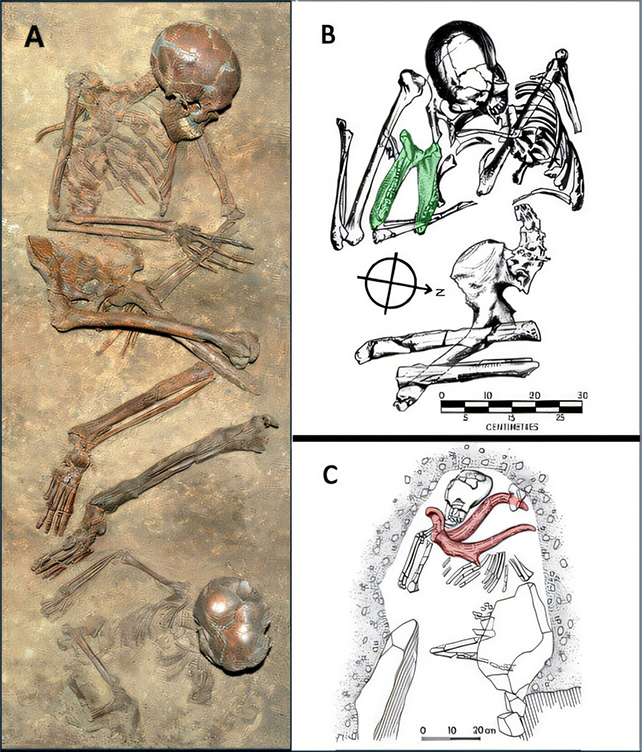Early Homo sapiens and their Neanderthal cousins started burying their dead around the same time and roughly the same place, some 120,000 years ago. This suggests the two species may have had, at least in part, a shared culture at the time.
A new study of these ancient burial sites across the Levant region in western Asia reveals other similarities and differences in how these two closely-related groups of human buried their dead.
Finding a number of the sites date earlier than other Neanderthal burials in Europe and Homo sapiens burials in Africa, the study suggests this is where the practice of burying the dead first began.
And according to the researchers, from Tel Aviv University and the University of Haifa in Israel, the 17 Neanderthal sites and 15 Homo sapiens sites show that as well as some cultural overlap, there may have been competition too.

"We hypothesize that the growing frequency of burials by these two populations in western Asia is linked to the intensified competition for resources and space resulting from the arrival of these populations," write the researchers in their published paper.
The difference between intentionally buried bodies and bones that have been blanketed by the elements where they drop isn't always clear. The researchers looked for distinct skeleton positions, grave goods or markers, and evidence of digging to come to their conclusions.
They found that both Neanderthals and H. sapiens would bury people of any age, though infant deaths were more common with the Neanderthals. Both groups also included a variety of goods with the graves, including small stones, animal bones, or horns.
However, Neanderthals tended to bury their dead deeper in caves, whereas H. sapiens were buried in cave entrances or rock shelters. What's more, H. sapiens skeletons were usually in something like a fetal position, whereas Neanderthal skeletons were discovered in any one of a variety of arrangements.
The differences don't stop there either. Neanderthal burials made greater use of rocks – perhaps as rudimentary gravestones – while H. sapiens burials featured more decorative items, including ochre and shells, that the Neanderthals didn't include.
"While Neanderthals and Homo sapiens share many aspects of their material culture to the level that they cannot be distinguished, when it comes to burials the picture is more complicated," write the researchers.
While there would've been some population pressure during the Middle Paleolithic, with both groups of hominins arriving in the Levant at similar times, the researchers think that only partly explains the sudden introduction of burials.
It's also worth noting that after the Neanderthals went extinct around 50,000 years ago, human burials seemed to stop in this part of the world for tens of thousands of years – another intriguing data point worth investigating further.
"The next burial outbreak in the Levant appeared at the end of the Paleolithic era, accompanying the early sedentary society and the last hunter-gatherers – the Natufians," write the researchers.
The research has been published in L'Anthropologie.
